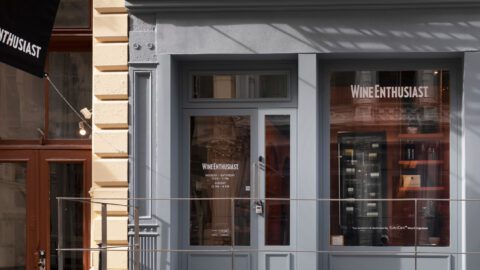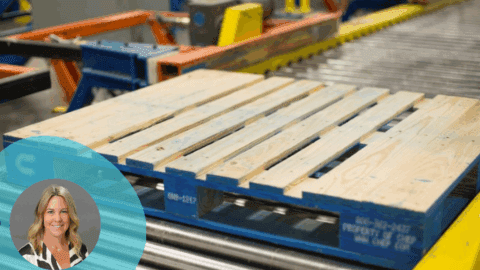By Andrew Razeghi, Professor, Kellog School of Management, Northwestern University
Moments of economic turbulence provide the unique opportunity to start new businesses, launch disruptive new products, and strengthen customer loyalty – often at a discount. During these challenging times, here are a few pointers on what to do, why to do it, and what to avoid. But first, a little motivation is in order and, rather than quote Charles Dickens, I offer you a tribute to organizations who have successfully innovated through the “worst of times”. When the going gets tough, the tough get creative.
1) Listen to the market. It’s quieter when it’s less crowded. Unmet needs abound.
First, difficult economic times expose unmet needs in the market making it much easier to identify opportunities for new product development. Rather than pull back on innovation in new products, consider how you may use this time to create and launch your most disruptive ideas. If you think it can’t be done, consider this.
On October 24, 1929, panic selling began on Wall Street. By October 29, margin calls wiped out thousands of accounts. The Great Depression was in full swing. Between 1929 and 1933, 15,000 banks failed, unemployment reached 25%, corporate profits plunged to less than zero, farm prices were cut in half, and GNP fell 45% to 1916 levels. In spite of the hazy forecast, many of America’s most successful innovators navigated this period of time not through cost-cutting, but through innovation. First up: Henry R. Luce.
In February 1930, four short months after the stock market crash, Luce launched an audacious, irreverent, and vibrantly-colored arsenal of human interest stories in the form of new media product called Fortune Magazine. Not only did he have the gall to launch a new product in the shadow of the Great Depression, he launched an expensive new product. At the outrageously-lofty price of $1 per issue, Fortune launched with only 30,000 subscribers. By 1937, the magazine netted a half-million dollars on its circulation of 460,000. By the end of the decade, Fortune had become required reading on Wall Street.
Why did it work? For the very same reason that all great new products work: it made a uniquely relevant contribution to its customers’ lives (period). A recession – or in this case, a depression – does not make market needs disappear into the ether. Not only do they still exist, new needs emerge. During difficult economic times, market needs are more exposed than they are during an economic boom when the market is saturated with everyone’s “great idea” – many of which are chasing needs that have already been satisfied. When markets turn south, it’s easier to discern what the market needs precisely because the market is thinking more about what it needs and why it needs it. We are simply more thoughtful, more aware, and more focused during economic downturns.
Like innovators before us, use this time to be aware of the market, not afraid of it. The great mistake many organizations make during turbulent times is that they quit listening to the market. They pull back on research and development precisely at the moment when the market is speaking most loudly. Now is the time to listen to your customers. Now is the time to get out into the market and identify those elusive unarticulated needs you’ve been searching for. Listen to the market. It’s speaking to you. Unmet needs abound.
2) Invest in your customers. Now they need you most. Loyalty hangs in the balance.
Downturns provide the opportunity to strengthen relationships with customers thereby improving customer loyalty. At a time when consumer sentiment is nearly at an all-time low, rather than reduce customer service, use this time to get closer to your customers, connect with them on a deeper level, and show them what’s possible – what the future will hold
In 2003, when the Dow was at historical lows over a 10-year period, Apple continued to invest. When asked why he hadn’t reduced research and development spending when others in the industry had experienced a slow down, Steve Jobs recalls: “What has happened in technology over the last few years has been about the downturn, not the future of technology. A lot of companies have chosen to downsize, and maybe that was the right thing for them. We chose a different path. Our belief was that if we kept putting great products in front of [customers], they would continue to open their wallets. And that’s what we’ve done. We’ve been turning out more new products than ever before, and Apple is one of the only two companies making money in the PC business. We’re not making a lot, but other than Dell, we’re the only one. Others are losing money – a lot of money.”
Through innovation, Apple has not only kept its pipeline robust, but – more importantly – it has remained in front of its customers. Apple always has a story to tell. And it tells that story through new products. New products are not only required to remain relevant, they are signs of hope to employees and to customers that your company and your brand are valuable in their lives. During these times, remember that your customers are as worried as you are. Stay close to them. Help them get what they want and they’ll remember you over the long haul: they will “continue to open their wallets”.
3) Rather than reduce price, offer more value to your customers and demand greater value from vendors.
During difficult economic times, consumers use greater discretion in making purchasing decisions. Every dollar matters and therefore every decision a customer makes is examined more closely. If your product or service isn’t extraordinary, your customers will be more likely to delay purchasing it. And, as every great salesman knows, time kills all deals.
Given the scrutiny that customers place on decision-making in turbulent times, the knee-jerk reaction among some companies is to reduce price. However, before you reduce price, consider how hard you’ve worked to “get the price”. Moreover, consider how much time and effort has been invested into getting you to where you are. Certainly your sales are hurting, but there is something much more valuable at stake and that is your brand. Your brand is sacred and, in the absence of innovation, stand-alone price reductions can wreak havoc on your brand. In some cases, price reductions in the absence of innovation have led to the implosion of the entire enterprise. Consider the fate of Vlasic, the famed pickle company.
Not only did Vlasic slash the price of its products, it loaded them up into gallon jars and sold the oversized products at Wal-mart for $2.97 (that’s less than the price of a quart of Vlasic sliced pickles found at grocery stores). The product worked for Wal-mart insofar that it garnered the attention of consumers. The big jar-o-pickles screamed value to Wal-mart’s customers. Although, the fact that it was a jar of pickles didn’t really matter.
What mattered was that it was a big, cheap jar of pickles! After all, who needs that many pickles? It could have been a big, cheap jar-o-socks; a big, cheap jar-o-batteries; or a big, cheap jar-o-peanut butter. Vlasic was nothing more than an in-store advertisement for Wal-mart’s Everyday Low Prices. Although the gallon jar fiasco wasn’t solely responsible for Vlasic’s demise, it certainly helped the company find its way to bankruptcy much more quickly. Its earnings evaporated. However, price reductions do more than compromise earnings. They compromise customers’ perceived value of your products and services [your brand] which ultimately affects the long-term equity of the franchise. Therefore, rather than look to price reductions, add greater value to your customers. Extend them better terms. Improve the purchasing process. Get your products to them more quickly. Increase your cooperative marketing activities. Show them ways in which to better use your products to improve their lives. Do anything but reduce price.
This logic also extends to your relationship with your vendors. Rather than demand price reductions from your vendors – which ultimately translate into quality reductions – work with your supplier community to extract greater value. Insist that they deliver faster, be more innovative, find ways to cut costs in their operations (and to show you how they’ve done so), and invest in your growth agenda. Do as a client of mine did: sponsor a “stop doing contest” and offer awards. The idea is simple. Offer “rewards” for those who can find ways to reduce operating expenses, improve efficiencies, and eliminate redundant and costly processes that may help not only save money, but improve operations. Lean on them – your vendors and your employees – to help you not only survive, but to thrive during these times. Let vendors innovate for you. One of the most often overlooked opportunities for innovation is to simply ask your vendors what they would do if they were you. Let them incur the cost of research. It is in their best interest to find the future for you.
4) Increase communication with your customers.
In addition to staying close to customers, use this time to increase your communications with them. In times of trouble, the worst thing you can do is to hide. From a marketing perspective, this involves cutting back communications. This is particularly salient advice for consumer products companies where new products and marketing are its lifeblood, but it also applies to companies operating in a business-to-business environment.
Consider the evidence. In a study of 600 business-to-business companies, McGraw-Hill Research found that businesses that maintained or increased their advertising expenditures during the 1981-1982 recession, averaged higher sales growth during the recession and in the three years following. By 1985, sales of aggressive recession advertisers (those that either maintained or increased spending) had risen 256% over those that cut-back on advertising. In 2002, SPI illustrated that, in contrast, during economic expansion, although 80% of businesses increased their advertising spending, there was no improvement in market share simply because everyone had increased spending. Now is the time to increase communications, not cut it back.
From an advertising perspective, there are a few things you may want to consider. When advertising during a recession, heed the advice of ARS Group. First, 15-second ads are just over half the price of 30-second ads however they are three-quarters the strength. So, you may want to use multiple 15-second ads versus 30-second ads to increase marketing strength. Moreover, 25% of the time, the 15-second ad is actually stronger than the 30-second ad. Second, in order to save on production costs, consider using “cut-down” versions of 30-second ads when creating 15-second versions, but be careful not to lose the key message. And third, if you do need to cut, do not “go black”. In other words, it is better to turn communications down to a slow leak than to shut off the valve entirely.
5) Move longer-term projects forward not back. Now is the time to grab market share.
Downturns provide the opportunity to widen the gap between you and your competitors. While others cower, now is the time to grab market share. Rather than compromise the integrity and quality of your product or service by paring back ingredients, eliminating features, or stripping it to its most basic offering, consider using this time to improve the quality of your products, invest in new opportunities, and make key acquisitions in line with corporate strategy. The key is to stay the course of strategy. Consider the success of “All the News That’s Fit to Print.”
Following the stock market crash in 1929, Adolph Ochs, publisher of The New York Times, issued a memo to his staff: “We must set an example of optimism. Please urge every department to go ahead as if we thought the best year in the world is ahead of us.” Although fifteen advertisers cancelled their contracts with Ochs in a single week, Ochs mitigated employee layoffs opting to use the $12 million surplus he had built during the roaring 1920s to pay salaries. He also maintained the editorial quality of the paper even though advertising had fallen off. So, in effect, the paper became a “better” product insofar that it contained fewer advertisements, but still had the same editorial and news coverage. Once the Great Depression had ended, the New York Times had more readers than any other newspaper in the country, which, in turn, translated into higher advertising rates.
Like Ochs decision to invest in turbulent times, in a study of 1,000 companies over an 18-year period (1982-1999), McKinsey & Company found that those companies that retained or gained market leadership during the recession of 1990-1991 invested cash reserves on strategic acquisitions and opted to pursue new opportunities that fit its overall corporate strategy rather than focusing on reducing operating expenses. They stayed the course. It sounds logical, but it requires discipline.
6) In recession, not all costs are created equal. Maintain or increase investment in “good costs”; prune “bad costs”; use judgment on “it depends costs”.
PIMS (Profit Impact of Market Strategy) studied 1000 businesses over the period between the 1970s to the 1990s with the intent of understanding how they faired during periods of recession. To qualify, the term recession generally refers to economic downturns lasting at least two quarters or more. In contrast, PIMS used “market recession” which is a measure of a product sales dip that lasts for at least two years and then recovers. Market recessions typically occur during economic downturns, but can also happen independently. And so, one could argue that PIMS’ findings are even more compelling as they are indicator of what President Ronald Reagan once defined as “recession”: “a recession is when a neighbor loses his job.” While the entirety of the economy may not be in recession, a particular industry or category may be experiencing difficult economic times. And therefore, understanding “market recession” in the context of or independently from recession is more relevant and more useful to individual businesses.
In order to separate winners from losers, PIMS considered three measures: return on capital employed (ROCE), change in profitability during the first two years of recovery, and change in market share during the first two years of recovery. PIMS aha moment was this: not all costs are created equal. In other words, there are “good costs” and “bad costs”. Good costs yield improvements to these measures. Bad costs do not. Good costs are those that should be increased during recession. Bad costs are those that should be cut. It should also be noted that PIMS also included an “it depends cost” category, which allowed for understanding specific costs relevant to specific businesses given their strategic direction at the time the recessions began. “It depends costs” include things such as outsourcing, retaining spare capacity, and even aggressive pricing should the category and/or market situation support such moves. PIMS findings and recommendations are clear: “In a recession, dare to invest aggressively in marketing, innovation and customer quality”. Innovation is a good cost. An example is Gillette’s 1990 introduction of its Gillette Sensor brand of shaving products. Launched in a recession, more than 8 billion Sensor razor blade cartridges and 400 million Sensors razors have been sold. By 1997, 49% of Gillette’s sales came from new products launched in the previous five years and R&D spending had reached $212 million.
Innovation, like marketing and customer service, is a good cost. In recession, dare to invest in good costs.
7) If you don’t have the money, at least spend the time.
Finally, realize that creativity loves constraints. Innovation thrives when it has no other choice. In this way, innovation is the most basic and primal of human experiences. We do it best when we have to. It may sound cliché (because it is), but necessity is indeed the mother of invention. In 1930, the Brazilian Coffee Institute had a problem: it was sitting on a huge surplus of coffee beans. Thinking, correctly, that a new product could help increase consumption, the Institute contacted Nestlé’s chairman with a request to develop “a coffee that was soluble in hot water and retained its flavor.”
Alas, seven years after the initial request, Nestlé’s scientists emerged with the solution and by 1938, Nescafé was launched in Switzerland. Shortly thereafter, it became a staple beverage of consumers through the world most notably among the United States armed forces. In fact, by World War II, Nescafe had become so popular among American military personnel that the entire production of its U.S. plant (one million cases per year) was reserved for military use only. The next 60 years stood witness to variations on the theme of every new, big, and bold idea in what I call the “New Product Waltz”: new packaging, new flavors (dark roast, light roast, decaf), new sizes, and – today – a range of specialty coffees. It’s all very au courant, yet it’s not at all. Nonetheless, it works.
Now is the time to unleash corporate creativity. The greatest mistake you can make now is to mortgage your future by failing to innovate. Remember: you don’t need a lot of money to think, but you do need time. And if you are already in the process of tightening your belt anyway, you might as well consider investing in a new pair of pants.
Andrew Razeghi is a Lecturer at the Kellogg School of Management at Northwestern University, a popular speaker on growth strategy and innovation, and author of several books including HOPE: How Triumphant Leaders Create the Future (Jossey-Bass/Wiley) and THE RIDDLE: Where Ideas Come From and How to Have Better Ones. THE RIDDLE was chosen by FAST COMPANY magazine as one of its “Smart Books” for 2008. For speaking inquiries, contact Cindy at cindy@strategylab.com.












